Warning: strlen() expects parameter 1 to be string, array given in /home2/orbman69/public_html/wp-includes/functions.php on line 262
(Last Updated On: )
Date: 223 BC
Location: Rome
Summary: At Ariminium a bright light like the day blazed out at night; in many portions of Italy three moons became visible in the night time.
Source: Dio Cassius, Roman History, Book I
Date: 222 BC
Location: Rome
Summary: “Also three moons have appeared at once, for instance, in the consulship of Gnaeus Domitius and Gaius Fannius.”
Source:- Pliny, Natural History, Book II, Ch. 32
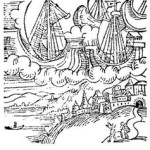 Date: 218 BC
Date: 218 BC
Location: Rome, Roman Empire, Praeneste, Italy
Summary: Glowing lamps were seen in the sky at Praeneste, a shield was observed at Arpi and in the Amiterno district, the sky was all on fire, and men in white garments appear.
Source: Flying Saucers Magazine
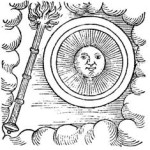 Date: 217 BC
Date: 217 BC
Location: Faleri, Italy
Summary: “At Faleri the sky had seemed to be rent as it were with a great fissure and through the opening a bright light had shone.”
Source: – Livy, History, Book XXII, Ch. 1
Date: August 6 216 B.C
Location: 180 Roman miles, east of Rome, in Apulia
Time:
Summary: Things like ships were seen in the sky over Italy… At Arpi (180 Roman miles, east of Rome, in Apulia) a ’round shield’ was seen in the sky… At Capua, the sky was all on fire, and one saw figures like ships…During the famous battle won by Hannibal in Cannae (2 August, 216 BC), in the Apulian plain near Barletta, which saw the largest defeat in the history of Rome, a mysterious phenomenon was observed: “On the day of the battle, in the sky of the Apulia, round objects in the shape of ships were seen. The prodigies carried on all night long. On the edge of such objects were seen men dressed in white, like clergymen around a plow.”
Source: [Harold T. wilkins, “Flying Saucers on the Attack”, pp. 164-69] Cielo e Terra [August 1967]
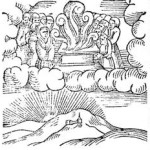 Date: June 213 or 214 BC
Date: June 213 or 214 BC
Location: Hadria, Italy
Summary: “At Hadria an altar was seen in the sky and about it the forms of men in white clothes.”
Source: Julii Obsequentis Prodigiorum Liber…per Conradum Lycosthenem Rubeaquensem integrati suae restitutus (Basel, 1552).
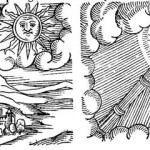 Date: 204 BC
Date: 204 BC
Location: Setia, Italy
Summary: Duo soles uisi, et nocte interluxit, fax Setie ab ortu solis in occidente porrigi uisa.
Source: Lycosthenes (Conrad Wolffhart), Prodigiorum ac ostentorum chronicon, p.130, 1557
Date: 186 BC
Location: Italian Peninsula, Italy.
Summary: ignesque caelestes multifariam orti adussisse complurium leui adflatu uestimenta maxime dicebantur.
Source: Titus Livius, Ab Urbe condita (The history of Rome), Book XXXIX, 22, . 1st century BC/AD
Date: 170 or 173 B.C
Location: Lanupium, Italy
Summary: “As it was fully expected that there would be war with Macedonia, it was decided that portents should be expiated and prayers offered to win ‘the peace of the Gods,’ of those deities, namely, those mentioned in the Books of Fate. At Lanuvium the sight of a great fleet had been witnessed in the heavens….” several objects, the size of a star, were observed on a road for two minutes
Source: The History of Rome Vol III by Li\y, trans. Reverend Canon Roberts (Montana: Kessinger Publishing 2004), 72.
Date: 163 BC
Location: Concius, Italy
Summary: Reported encounter with inhuman beings involving radiation effects. An abduction by aliens resulting in physical harm was reported.
Source: Sparks, Brad
Date: 163 BC
Location: Formice, Italy
Summary: “In the consulship of Tiberius Gracchus and Manius Juventus at Capua the sun was seen by night. At Formice two suns were seen by day. The sky was afire. In Cephallenia a trumpet seemed to sound from the sky. There was a rain of earth. A windstorm demolished houses and laid crops flat in the field. By night an apparent sun shone at Pisaurum.”
Source: – Obsequens, Prodigiorum, Ch 114
Date: 122 BC
Location: Ariminium, Italy:
Summary: A huge luminous body lit up the sky, and three moons rose together. Pliny writes in his Natural History, Book II, Chapter XXXII: “Three moons have appeared at once, for instance in the consulship of Gnaeus Domitius and Gaius Fannius.” Another citation from Dio Cassius (Roman History, Book I) states: “At Ariminium a bright light like the day blazed out at night; in many portions of Italy three moons became visible in the night time.” The observation of triple moons in the night sky is a rare but explainable atmospheric phenomenon. We include the case because of the ambiguity about the coincidence of several phenomena making a strong enough impression to be recorded by serious authors.
Source: Pliny the Elder, Natural History, trans. Harris Rackham (Harvard University
Press, 1963), vol. 10, 243.
Date: 113 or 103 BC
Location: Amelia and Todi, Italy
Summary: During the War with the Cimbri, “from Amelia and Todi, cities of Italy, it was reported that at night there had been seen in the heavens flaming spears, and shields which at first moved in different directions, and then clashed together, assuming the formations and movements of men in battle, and finally some of them would give way, while others pressed on in pursuit, and all streamed away to the westward.” The description of the objects’ behavior is puzzling, radically different from what would be expected in the case of a meteor shower. Nor does it fit well with an aurora borealis.Note that Obsequens locates the sighting at Rimini in the Emilia-Romagna region of Italy.
Source: Plutarch, Plutarch’s Lives, trans. Bernadotte Perrin (Harvard University, 1950) v.9, 509. Also see: Lycosthenes, Julii Obsequentis Prodigiorum Liber…per Conradum Lycosthenem Rubeaquensem integrati suae restitutus (Basel, 1552).
 Date: 100 B.C
Date: 100 B.C
Location: Italian Peninsula, Italy.
Summary: ” On a vu pendant la nuit, sous le consulat de C. Caecilius et de Cn. Papirius (an de Rome 641), et d’autres fois encore, une lumière se répandre dans le ciel, de sorte qu’une espèce de jour remplaçait les ténèbres.
Source: Plinius Secundus, Naturalis Historia, Liber II, XXXV.
Date: 99 B.C
Location: Tarquinia, Italy
Summary: When C. Murius and L. Valerius were consuls, in Tarquinia, there fell in different places… a thing like a flaming torch, and it came suddenly from the sky. Towards sunset, a round object like a globe, or round or circular shield took its path in the sky, from west to east.
Source: Lycosthenes, Julii Obsequentis Prodigiorum Liber…per Conradum Lycosthenem Rubeaquensem integrati suae restitutus (Basel, 1552).
Date: 91 or 90 B.C
Location: Arenarie, Italy
Summary: “At Arenarie, while Livius Troso was promulgating the laws at the beginning of the italian war, at sunrise, there came a terrific noise in the sky, and a globe of fire appeared burning in the north. In the territory of Spoletium, a globe of fire, of golden color, fell to the earth gyrating. It then seemed to increase in size, rose from the earth and ascended into the sky, where it obscured the sun with its brilliance. It revolved toward the eastern quadrant of the sky.”
Source: Obsequens, Prodigiorum, op. cit., ch. 114; Paulus Orosius, Historiarum Adversum Paganos, Book V.
Date: 85 B.C
Location: Rome, Italy
Summary: “In the consulship of Lucius Valerius and Caius Marius, a burning shield scattering sparks ran across the sky.”
Source: Pliny, Natural History: Book II, ch 34
Date: 83 BCE: Roman General Syllas see’s a satyr near Illyrian Apollonia Greece
Date: 81 BC
Location: Spoletium, Italy
Summary: “Near Spoletium a gold-colored fireball rolled down to the ground, increased in size; seemed to move off the ground toward the east and was big enough to blot out the sun.”
Source: – Obsequens, Prodigiorum, Ch. 114
Date: 76 BC
Location: China
Summary: “The fifth year of the Yiian-feng reign period, in the fourth month (12th May to 9th June, 76 BC), a candle star appeared between K ‘uei and Lou.” Astronomers have no idea what it could have been. Some suggest it was a nova, others a comet or meteor. Chapter 26: 1292 of the same History defines the term thus: “A candle star resembles Venus. It remains stationary from sight right after its appearance. Riot is expected in cities and districts over which it shone.” A candle star was one of the 18 irregular “stars” defined in Chinese records..
Source: History of the Han Dynasty, ch. 26: 1307; quoted by Y. L. Huang, “The Chinese Candle Star of 76 BC,” The Observatory 107 (1987): 213. The History of the Han Dynasty was part of “Astrological Treatise,” compiled by Ma Hsu around 140 AD.
Date: 76 BC
Location: Rome, Italy
Summary: A group of witnesses with Proconsul Silenus: A spark fell from a star, became as big as the moon, and went up again, which contradicts natural explanations. The original text reads: “In the consulship of Gnaeus Octavius and Gaius Scribonius a spark was seen to fall from a star and increase in size as it approached the earth, and after becoming as large as the moon it diffused a sort of cloudy daylight, and then returning to the sky changed into a torch; this is the only record of this occurring. It was seen by the proconsul Silanus and his entourage.”
Source: Pliny the Elder, Natural History, trans. Harris Rackham (Harvard University Press, 1963).
Date: 74 BC or
Location: Asia Minor – Istanbul, Roman Empire, Otryae, Dardanelles, Turkey
Summary: As the Roman army progressed toward a clash with the army of King Mithridates VI in what is now modern-day Turkey, both sides would witness something completely out of the ordinary. The account, which took place in 74 BC, was chronicled by the historian Plutarch. (Note, however, that Plutarch was not alive during 74 BC.) Plutarch stated that despite the perfectly fine and pleasant weather, a sudden boom announced itself over the area, and a flash spread across the sky. He then wrote that “a huge, flame-like body was seen to fall between the two armies.”Furthermore, Plutarch would provide a solid and detailed description of the object. He stated it to be the shape of a wine jar and the color of molten silver. The object landed in between the two armies, stopping their advancements. Each army, both fascinated and scared of the mysterious craft before them, began to retreat, temporarily halting the conflict.
Source: – Lucullus
Date: 73 BC ?
Location: Asia Minor – Istanbul, Roman Empire, Otryae, Dardanelles, Turkey
Summary: Pontus: While Roman legions were engaged in battle near the Black Sea against King MithriDates a huge flaming object fell between the two armies. It was said to have a shape like a wine jar and was the color of molten lead.
Source: – Lucullus
Date: 66 BC
Location: Roman Empire
Summary: “In the consulship of Gnaeus Octavius and Gaius Suetonius a spark was seen to fall from a star and increase in size as it approached the earth. After becoming as large as the moon it diffused a sort of cloudy daylight and then returning to the sky changed into a torch. This is the only record of its occurrence. It was seen by the proconsul Silenus and his suite.”
Source: – Pliny, Natural History, Book II, Ch. 35
Date: 48 BC
Location: Thessaly and Syria
Summary: “Thunderbolts had fallen upon Pompey’s camp. A fire had appeared in the air over Caesar’s camp and had fallen upon Pompey’s … In Syria two young men announced the result of the battle (in Thessaly) and vanished.”
Source: – Dio Cassius, Roman History, Book IV
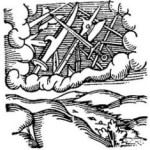 Date: 43 B.C
Date: 43 B.C
Location: Italian peninsula, Italy
Summary: [45,17] In the consulship of Aulus Hirtius and Gaius Vibius […] In addition to these omens, clear as they were, a flash darted across from the east to the west and a new star was seen for several days. Then the light of the sun seemed to be diminished and even extinguished, and at times to appear in three circles, one of which was surmounted by a fiery crown of sheaves. This came true for them as clearly as ever any prophecy did. For the three men were in power,— I mean Caesar, Lepidus, and Antony,— and of these Caesar subsequently secured the victory.
Source: Cassius Dio, Roman History, Book XLV, 17, . 3rd century AD
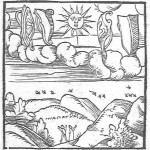 Date: 42 B.C
Date: 42 B.C
Location: Rome, Lazio, Italy
Summary: “Something like a sort of weapon, or missile, rose with a great noise from the earth and soared into the sky” Objects were sighted that had an appearance and performance beyond the capability of known earthly aircraft. Three objects were observed.
Source: Prodigia of Julius Obsequens, Rome
Date: 12 BC
Location: Rome
Time:
Summary: A comet-like object hovered days over Rome for several then melted into flashes resembling torches. There is actually very little known about this particular incident, but it is worth including here simply because of the bizarre nature of it at a time when very few things should have been in the sky at all. In 12 BC, a strange “comet-like” object simply hovered over Rome for several days. It then “melted” into what was described as flashes that looked similar to torches. The account, as brief as it is, doesn’t mention any kind of sound or loud noise, so it is unlikely to have been a sudden explosion. Might it be that the craft was a mother ship of some kind, which dispersed smaller, probe-like craft after surveying the area as it hovered?It is perhaps also worth noting here that any accounts in Roman history arguably should be taken slightly more seriously than others. The reason for this is that Roman historians and recorders of current events had to go through strict procedures to ensure their reports were credible and accurate, and only then could the account be entered into the official record.
Source:
Date: 12 BC
Location: China, exact location unknown
Time:
Summary: “In the first year of the Yuen-yen period, at the 4th Moon, between 3 P.M. and 5 P.M., by clear sky and serene weather, a sound similar to thunder was heard repeatedly. A meteor (sic) appeared, the front part the size of a vase, over 100 feet long. Its light was red whitish. It stood far to the SE of the sun. It threw off fiery sparks on four sides, some as large as a pail, others the size of an egg. They fell like rain. This phenomenon lasted until the evening. ” This is an unexplained episode. Meteors do not linger for two hours, and do not shower the landscape with fiery rain.
Source: Edouard Biot, Catalogue des etoiles filantes et des autres meteores observes en Chine pendant 24 siecles (Paris: Imprimerie Royale, 1846), 9-10. This book provides an extremely valuable record of astronomical observations in China during much of its history.
Date: 9 BC
Location: Japan, Kyushu
Time:
Summary: The Kumaso people were prospering, until nine “Suns” were seen in the sky, followed by great chaos. We considered the hypothesis that the phenomenon was a sun-dog, but we found no record of a refraction effect producing nine images of the sun. This is one of numerous items for which it is difficult to locate Asian sources in translation. We mention such cases, fragmentary as they are, in the hope of encouraging future researchers to seek complete sources. This story may originate in the ancient Chinese legend of the nine suns shot down from the sky by Yao dynasty hero Yi when Earth’s original ten suns were making life insufferable, in which case it should be regarded as legend rather than fact.
Source: Brothers Magazine (Japan) No. Ill, 1964. This magazine was one of the earliest publications about UFOs in Japan. Unfortunately, it did not provide a quote from an actual source.
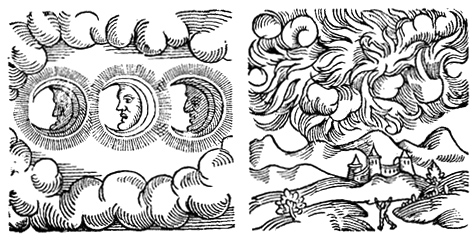
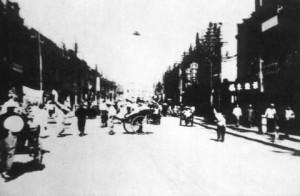
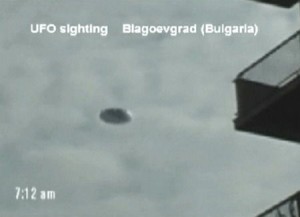
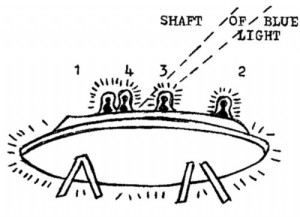
Related Reports
Warning: strlen() expects parameter 1 to be string, array given in /home2/orbman69/public_html/wp-includes/functions.php on line 262
3 min read
150 million – 3,000 BCE UFO & Alien Sightings
Warning: strlen() expects parameter 1 to be string, array given in /home2/orbman69/public_html/wp-includes/functions.php on line 262
6 min read
2999 – 329 BCE UFO & Alien Sightings
Warning: strlen() expects parameter 1 to be string, array given in /home2/orbman69/public_html/wp-includes/functions.php on line 262
2 min read
3rd millennium BCE: Taranis, the thunder-god and UFO’s